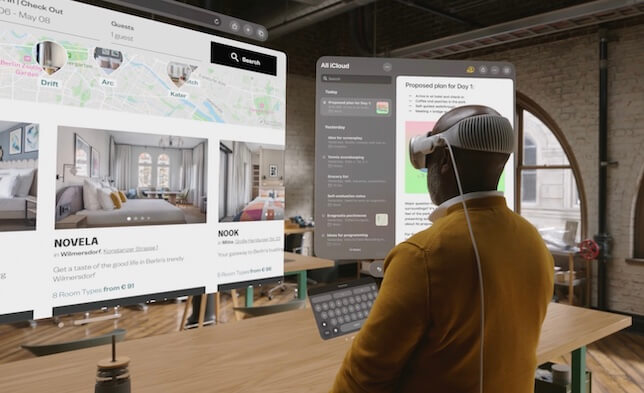The Mixed Reality Hypothesis
By Dann Berg
Published or Updated on
 Photo from Apple
Photo from Apple
Apple announced a new mixed-reality headset, and boy do I have opinions…
But first, you should check out this six-minute announcement recap video, if you haven’t see Apple pitch the Vision Pro yet.
I went into this announcement a skeptic. The rumors weren’t really compelling to me. I figured AR/VR was a flash-in-the-pan — the equivalent of 3D Televisions. Society had moved on from trying to get AR/VR to stick, and now Artificial Intelligence was the Next Big Thing. Virtual Reality just didn’t have space anymore.
And I’m still not totally convinced that this opinion is wrong.
However, after Apple’s announcement, I understand how AR/VR could fit into our society.
Meta (formerly Facebook) presented its VR vision years ago with the Oculus, which just never caught on in any sort of meaningful, mainstream way. The technology is limited by its low price point, and the low price point necessary to get the device into as many hands as possible in order to enable to “network effect.” Meta’s VR vision is all about socializing with friends and playing games. The problem with this vision is: VR is a worse version of both of those things.
And I think that was the mindset most people had going into Apple’s AR/VR announcement event. But it turns out Apple was thinking a touch differently, and on a much larger scale.
It turns out Apple has solved nearly all the big hardware and software limitations that were preventing the VR experience from feeling premium. It did this by throwing money at the problem, and thus created a device with miraculous technology and a shockingly-high price. But Apple didn’t really have a choice, it had to solve all those limitations in order for people to really see its bigger-picture vision.
Here’s my hypothesis: the Apple Vision Pro will be a tool for work and productivity. It won’t be for everyone, but it will be fairly common in 5-10 years, once the price comes down to $1,500 - $2000. It’ll replace laptops for many people.
Here’s my thinking: the MacBook laptop is still the main productivity workhorse in the Apple product lineup. Laptops are what people use for work. iPads, even with similar-sized screens just aren’t the same. Sure, you can do real work on an iPad, but iPadOS just isn’t as streamlined as with MacOS for productivity. In fact, work gets harder (not impossible, but harder) the smaller you get: laptop > tablet > smartphone > smart watch. Even though you have access to the same digital world on all these different devices, each smaller screen is a different computing context.
The Vision Pro headset expands your computing context to your entire room. You can put the headset on and be transported to a full office/living room/bedroom filled with all the digital things you want to get done. You enter that world to do work, in the same way you’d sit in front of your laptop at the beginning of the work day. Then you can take off the headset when you’re done, completely leaving that digital context and returning to the real world.
At least, that’s the vision that Apple is presenting. I don’t know if it’s what the experience will be like in practice, but I’m feeling bullish. Apple had a 30-minute demo for reporters after the big annoucement, and almost everyone was 1) blown away and 2) came away thinking about the entire AR/VR space differently. If anyone can successfully execute on this radically ambitious plan, it’s Apple.
Further reading:
- John Gruber (long-time Apple blogger) talks about his demo experience
- David Smith (long-time indie Apple Developer) shares why he’ll be a day-one developer
- A less optimistic opinion from The Atlantic (via Avi)